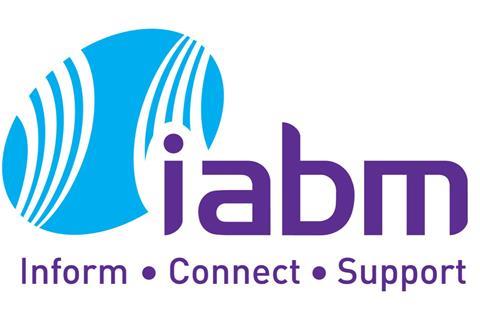With an increasing number of new entrants – and some failures – the pay-TV and OTT streaming markets are dynamic yet fragmented, while customer frustrations are rising. A timely online roundtable discussion on IBC365 makes for essential viewing for anyone interested in the IPTV and content sectors.

Sponsored by Xperi, this in-depth round-table discussion is now available to view on demand on IBC365. Moderated by Andreas Waltenspiel, general manager at Waltenspiel Management Consulting, it opens with the interesting statistic that 47% of the US TV viewership are frustrated because of the growing number of subscriptions and services they need to subscribe to watch what they want. This was followed by another indicator of unhappiness, with 57% of TV viewers found by Deloitte to be frustrated when the content they love disappears from the platform they just subscribed to. Which, as Waltenspiel says, is not that surprising really.
The panel
- Andreas Waltenspiel, general manager at Waltenspiel Management Consulting (moderator)
- Edwin Elberg, senior director of product development at Liberty Latin America
- Chris Thun, vice president of product at TiVo
- Jim Brickmeier, chief product and marketing officer at Velocix
“Currently the pendulum swings in the direction of more and more fragmentation,” he adds. “Direct to consumer players are some of the content owners now. We’re going to look at how classical operators such as Liberty Latin America can keep control, [pull it back] and make the customers happy.”
Chris Thun, vice president of product at TiVo, was able to give the panel some context for these statistics with some valuable insight gained from a TiVo trend report from the first quarter of this year.
“There’s a significant degree of disruption occurring,” Thun stated. “If you think back to 2014, we had time spent from a video perspective where about 95% was coming from your operator: from live TV, DVR and operator VOD. Only 5% came from the streaming world, services like Netflix and Hulu and others. Now fast forward to today and you’re seeing streaming obviously catching up.
He added: “But the question, for operators, or whether you’re a content owner, a software provider, or a cloud infrastructure provider, is what are the implications of this tectonic shift in terms of the way that video is delivered?”
- Read more: Why Quibi pulled the plug
From a consumer perspective, Thun took the panel back to 2011, and using statistics that could be applied to other markets around the world, showed that the average number of services that an American household subscribed to and consumed from was just over one. “You really had no need for aggregation then,” he said. “Fast forward to today and what we’re seeing in our survey data is the average American household on a monthly basis is using just shy of seven services. In that world, it gets pretty confusing pretty fast and leads to the [frustration] that Andreas mentioned.”
‘You have a clear path to simplifying the user experience in making the consumer more content in this world of fragmentation,’ Chris Thun, TiVo
To deal with this Thun said that TiVO believes two core areas are required. First is universal search, so that the consumer doesn’t have to hunt across a sea of apps in order to find what they want to watch. The other is universal browse, that is recommendations where if the consumer is looking for something new to watch, the service provider pushes forward titles based on their past behaviour that it best thinks fit the consumer’s taste profile. “Combine this and you have a clear path to simplifying the user experience in making the consumer more content in this world of fragmentation,” added Thun.
- Read more: Transforming the TV experience in the 2020s
Aiming for aggregation
The session moved on to focus on a case study about Liberty Latin America, presented by its senior director of product development, Edwin Elberg. Following a spin off from Liberty Global and operating independently throughout parts of the Caribbean and South America, Liberty Latin America had to find a solution that would integrate the disparate technologies used by its existing customers with the new world of OTT providers.
“We not only want to be aggregators, but super aggregators,” said Elberg. “[Have the] ability to not only integrate but also have a cohesive user experience.”
Liberty Latin America choose to go down the route of Android TV on cloud and with TiVo, said Elberg, “because they not only provide a solution in terms of a middleware and a nice UX on top of what Android TV can do, but also because of their ability to vertically integrate the metadata to provide the experiences that we [wanted] for our customers.”
‘The cool stuff is trying to figure out how do you manage workloads across the different environments and being smart about how you how you distribute content to consumers to give them the best quality at the lowest cost’, Jim Brickmeier, Velocix
“We realised fairly quickly that we were aligned in terms of where the world was headed, and what the consumer wanted,” said Thun.
Jim Brickmeier, chief product and marketing officer at Velocix revealed how his company was able to underpin the TiVo experience for Liberty Latin America. “We help with the delivery and streaming, support the ingest and the recording of video content and some of the advanced time-shifted services like cloud DVR services,” he explained. “And we support the delivery of the content to any device that the consumer may have. We work really closely with TiVo on the integration, trying to make a standardised, end to end architecture that can be quickly deployed.”
Cloud vs on-prem
Andreas Waltenspiel took the conversation back out into the wider IPTV world, and the panel discussed the pros and cons of going to the cloud versus an on-premise solution.
While the cloud definitely gives flexibility, said Brickmeier, it does add some complexity. “Part of the challenge from a solution provider perspective is to try to make sure that everybody has all of that flexibility that they want,” he added. “But you don’t make it so complicated to operate and manage and maintain these solutions that that you lose all of the benefits of that flexibility.”
‘We not only want to be aggregators, but super-aggregators’, Edwin Elberg, Liberty Latin America
Brickmeier pointed out the benefits of hybrid clouds: “You can use cloud technology within a service providers’ network and can also use that same technology outside of the service providers network. The cool stuff is really trying to figure out how do you manage workloads across the different environments and being smart about how you how you distribute content to consumers to give them the best quality at the lowest cost.”
The conversation moved onto monetisation, bring in the concept of universal billing across the various operator and OTT services offered by the aggregators, and then to some questions from the audience, including who among the broadcasters, platforms, pay-TV providers or telcos was best positioned to retain overall control of that aggregated offering, how maintain customer relationships and build trust for the consumer, and the threat posed by the FANGs to operators like Liberty Latin America.



























No comments yet